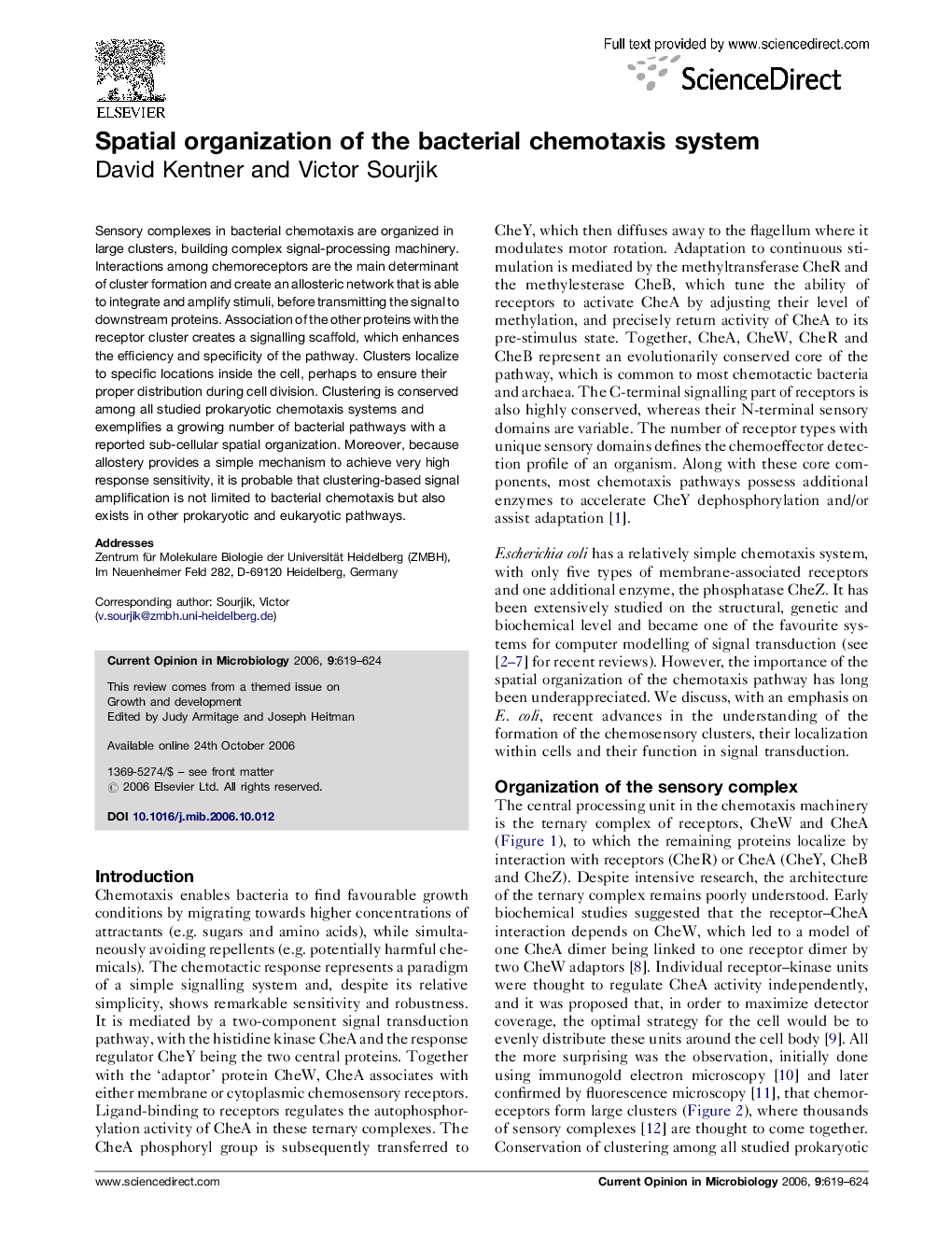| Article ID | Journal | Published Year | Pages | File Type |
|---|---|---|---|---|
| 3399700 | Current Opinion in Microbiology | 2006 | 6 Pages |
Sensory complexes in bacterial chemotaxis are organized in large clusters, building complex signal-processing machinery. Interactions among chemoreceptors are the main determinant of cluster formation and create an allosteric network that is able to integrate and amplify stimuli, before transmitting the signal to downstream proteins. Association of the other proteins with the receptor cluster creates a signalling scaffold, which enhances the efficiency and specificity of the pathway. Clusters localize to specific locations inside the cell, perhaps to ensure their proper distribution during cell division. Clustering is conserved among all studied prokaryotic chemotaxis systems and exemplifies a growing number of bacterial pathways with a reported sub-cellular spatial organization. Moreover, because allostery provides a simple mechanism to achieve very high response sensitivity, it is probable that clustering-based signal amplification is not limited to bacterial chemotaxis but also exists in other prokaryotic and eukaryotic pathways.
